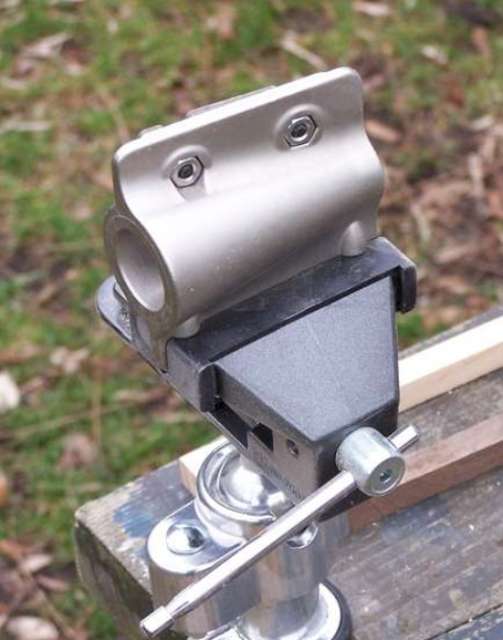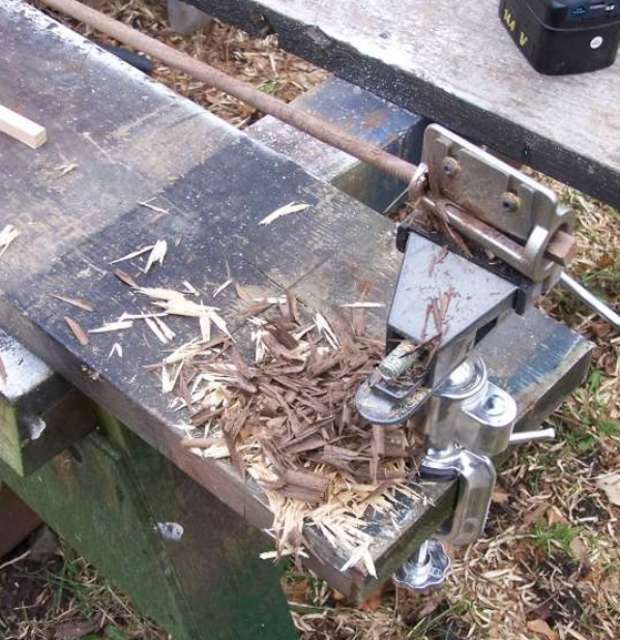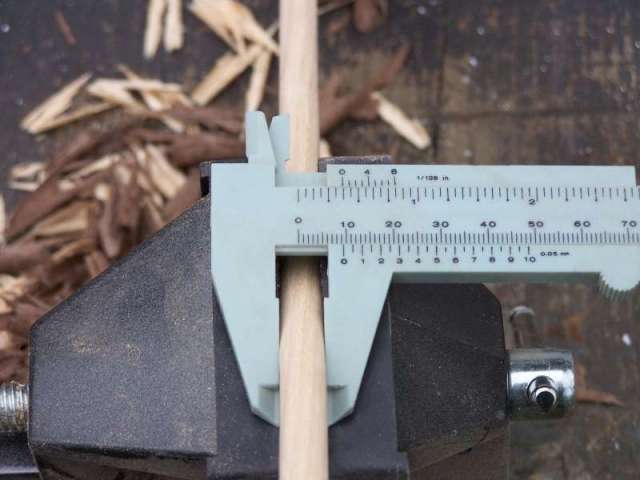When Lee Vally came out with their Dowel Maker (http://www.leevalley.com/en/wood/page.aspx?p=42331&cat=1,180,42288&ap=1) I looked at it with interest but could not justify the cost for this "Cadillac" dowel making system. Then they came out with this "economy" system: http://www.leevalley.com/en/wood/page.aspx?p=52401&cat=1,180,42288&ap=1
I decided that I could afford to try one at that price.
 I
don't remember which one I bought but I was impressed enough to go back and get
the other two sizes, so I have all three now. I made a few dowels today and took
some pictures.
I
don't remember which one I bought but I was impressed enough to go back and get
the other two sizes, so I have all three now. I made a few dowels today and took
some pictures.Here is the cutter set up in a portable vise on a plank across some sawhorses outside my shop and a couple of blanks ready to be turned into dowel rods. The blanks are ash and walnut and were simply ripped to 7/16" square on the table saw. The instructions for the cutters recommend cutting the dowel stock 1/16" oversize and I am using the 3/8" dowel cutter.

There are two tabs on the bottom wing of the cutter body that register on top of the vise jaws to hold it level and resist tipping as you push the dowel through the cutter.

You simply insert the end of the dowel blank into the square drive socket in the drill, put the other end into the cutter and start the drill while pushing it through. They recommend a corded electric drill rather than a cordless because, just like on the lathe, you get a cleaner cut at the higher speed a corded drill provides. The cordless still does a pretty good job.

There will be a couple of inches left square at the end of the blank when you are done. I suppose if you needed the whole thing round you could grab the other end in a drill and run it in reverse while pulling it the rest of the way through, but I have never tried it.

You then pull the dowel rod back out through the infeed side. The surface looks pretty rough right off the cutter:

The ridges and fuzz sand off very easily, though. I spent no more than 1 minute each on these two rods with 120 grit paper hand sanding along the length:

The last photo shows the size of the finished dowel rod. This one is a very nice no-slop sliding fit in the 3/8" hole produced by my brad point bit. The diameter of the rod can be varied by adjusting the blade's cutting depth, although it is a trial and error operation. There are indexing marks on the body of the cutter that assist in setting the blade.

Very coarse, open grained woods like ash and oak may tear out a bit unless they are very straight grained. The walnut I used for this was anything but straight grained but still produced a pretty good rod, although I did have a couple of spots where I got some tear-out. Close grained woods like maple and cherry work the best.
Overall I am very pleased with the performance of this tool.